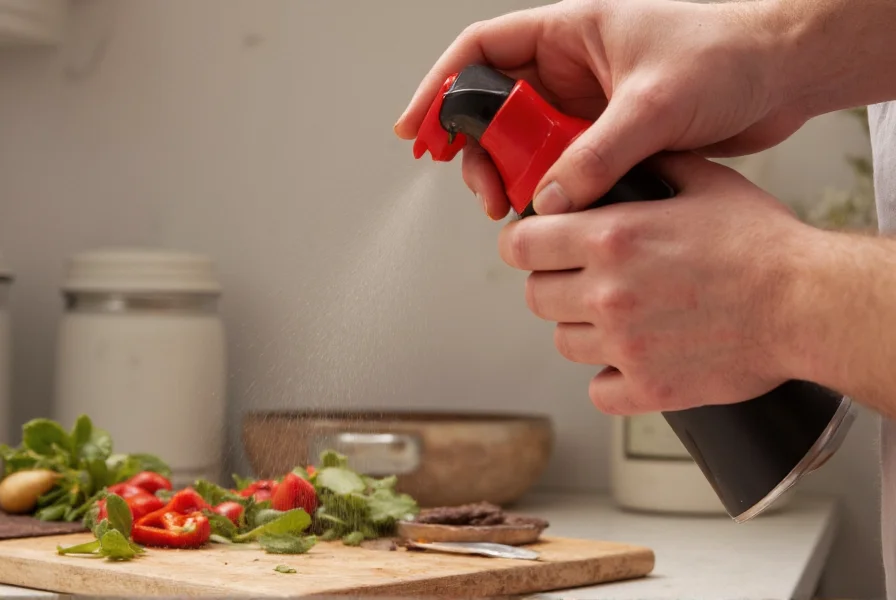When evaluating personal safety options, understanding what pepper spray is and how it functions proves essential for responsible self-defense planning. This non-lethal deterrent has become a preferred choice for civilians seeking effective protection against potential threats. Unlike tear gas, which affects a wider area, pepper spray delivers a targeted stream or fog that specifically impacts aggressors while minimizing collateral effects.
How Pepper Spray Works: Science Behind the Defense
Pepper spray's active ingredient, oleoresin capsicum (OC), is derived from hot chili peppers. When deployed, it triggers immediate physiological reactions:
| Reaction | Onset Time | Duration |
|---|---|---|
| Eye inflammation | 1-3 seconds | 15-30 minutes |
| Skin burning sensation | 2-5 seconds | 45-60 minutes |
| Respiratory distress | 3-8 seconds | 30-45 minutes |
The concentration of OC determines potency, measured in CRC (Chemical Riot Control) units. Most civilian self-defense sprays contain 1.0-2.0% CRC, while law enforcement versions may reach 10%. Higher concentrations don't necessarily mean better effectiveness—proper delivery and coverage matter more than maximum strength.
Legal Considerations Across Different Regions
Pepper spray legality varies significantly by location. Understanding local regulations prevents unintentional legal complications:
- United States: Federally legal but state restrictions apply. New York requires purchase from licensed firearms dealers. Massachusetts limits OC concentration to 2%. California restricts canister size to 2.5oz.
- Canada: Classified as a prohibited weapon—illegal for civilian possession except in specific self-defense spray formulations approved by Health Canada.
- United Kingdom: Completely prohibited under Section 5 of the Firearms Act 1968.
- Germany: Legal for those over 18 with concentration limits (up to 2% OC).
Always verify current regulations with local law enforcement before purchasing. Many jurisdictions require pepper spray to remain inaccessible while driving and mandate visible storage in residences.
Effectiveness and Proper Deployment Techniques
Pepper spray effectiveness depends on correct usage. Common mistakes reduce its defensive value:
- Wind conditions: Deploying against wind direction risks self-contamination. Always assess wind direction before use.
- Range limitations: Most civilian units have effective ranges of 8-12 feet. Practice targeting facial areas for maximum impact.
- Follow-through: After deployment, immediately create distance—don't wait to confirm effectiveness.
Law enforcement studies show properly deployed pepper spray stops aggressive behavior in 80-90% of encounters. However, individuals under extreme adrenaline, drugs, or alcohol may exhibit reduced sensitivity. Combine pepper spray with verbal warnings and escape planning for optimal safety.
Safety Protocols and Training Requirements
Responsible pepper spray ownership requires understanding safety protocols:
- Store separately from children and pets in temperature-controlled environments (extreme heat may cause canister rupture)
- Replace annually as propellant degrades over time
- Practice deployment with inert training canisters to build muscle memory
- Understand first aid procedures for accidental exposure (flush with water, not oil-based products)
Comparing Pepper Spray Formulations
Different delivery systems serve specific defensive scenarios:
- Stream: Most accurate for windy conditions and precise targeting (ideal for urban environments)
- Fog: Creates wider coverage area but affected by wind (better for open spaces)
- Gel: Sticks to targets with minimal wind drift (effective against multiple attackers)
- Foam: Minimal airborne particles, reducing cross-contamination risk (suitable for confined spaces)
Consider your typical environments when selecting a formulation. Urban dwellers often prefer stream varieties, while those in open areas might choose fog for broader coverage. Gel formulations work well against multiple assailants but require closer range.
Pepper Spray Alternatives and Complementary Tools
While pepper spray remains highly effective, consider these complementary options:
- Personal alarms: Draw attention to your situation without physical confrontation
- Tactical flashlights: High-lumen lights can temporarily disorient attackers
- Self-defense classes: Build confidence and physical skills alongside chemical deterrents
A layered approach to personal safety proves most effective. Combine situational awareness, verbal boundary setting, and physical deterrents rather than relying solely on any single tool. Remember that pepper spray serves as an escape tool—not a weapon for confrontation.
Final Safety Considerations
Pepper spray serves as an effective self-defense tool when used responsibly and legally. Prioritize situational awareness and avoidance strategies before considering deployment. Regular training builds confidence in high-stress situations, while understanding local laws prevents unintended legal consequences. Remember that no defensive tool guarantees safety—combining pepper spray with other safety practices creates the most comprehensive personal protection strategy.











 浙公网安备
33010002000092号
浙公网安备
33010002000092号 浙B2-20120091-4
浙B2-20120091-4